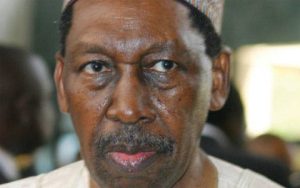
A Navy investigation has concluded that the tragic deaths of two Navy SEALs during a maritime intercept off the coast of Somalia were preventable and the result of inadequate training and unclear guidance on buoyancy and flotation devices.
Chief Special Warfare Operator Christopher Chambers, 37, and Naval Special Warfare Operator 1st Class Nathan Ingram, 27, drowned while attempting to board a vessel carrying Iranian weapons to Yemen in January 2024. According to the investigation, both men fell into heavy seas while wearing gear that hindered their ability to stay afloat. Chambers fell from the side of the ship, while Ingram jumped in to assist him.
“The entire tragic event elapsed in just forty-seven (47) seconds,” the report found, noting that neither the SEALs’ physical strength nor their emergency flotation devices, if activated, were sufficient to keep them at the surface. Chambers was seen at the surface for just 26 seconds, while Ingram surfaced for 32 seconds before both men disappeared into the sea.
General Michael “Erik” Kurilla, the commander of US Central Command, described the incident as preventable and linked to “systemic issues.” Both SEALs were posthumously promoted.
SEAL Team Three, stationed aboard the USS Lewis B. Puller, had been conducting maritime intercept missions for several weeks. On the night of the incident, the SEALs were tasked with intercepting a slow-moving dhow. The mission, initially planned for January 12, was moved up by a day, leaving some team members concerned about rushing the operation. Despite this, all team members expressed that they were “good to go.”
The operation faced challenging conditions, with 6- to 7-foot seas, just below the 8-foot limit for such nighttime missions. The boarding craft struggled, needing three attempts to get SEALs onto the ship. Chambers fell into the water during the third attempt, and Ingram followed to help him.
After the incident, the Navy launched a 10-day search, covering 48,600 square miles, but the bodies were never recovered. The investigation noted that Navy policy does not pursue recovery when the sea is considered a suitable final resting place for sailors.
The investigation uncovered several shortcomings in SEAL Team Three’s preparation. While pre-deployment buoyancy tests were conducted off the coast of San Diego, none were completed after the team embarked on the USS Puller. Moreover, guidance on buoyancy was inconsistent, with some materials emphasizing “positive buoyancy” and others focusing on “neutral buoyancy.” This lack of clear instruction led to confusion, leaving the SEALs unsure of how to configure their gear for the mission.
Further, the investigation found that the SEALs were not sufficiently trained in the use of their emergency flotation devices, known as the Tactical Flotation Support System. It remains unclear whether Chambers or Ingram attempted to activate these devices.
The report recommended several changes to prevent future incidents, including formalizing buoyancy requirements for missions, evaluating the need for fail-safe flotation devices, and reviewing the lifesaving equipment available on Navy boarding vessels.







